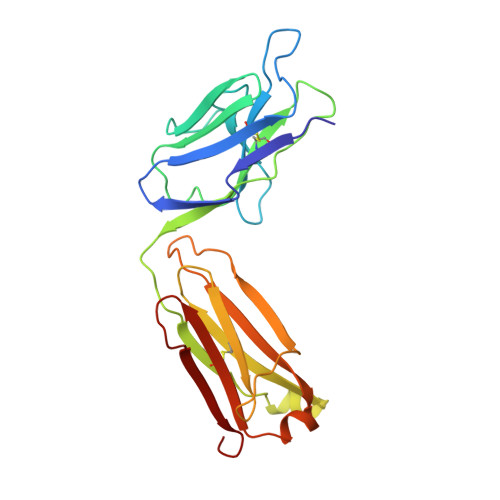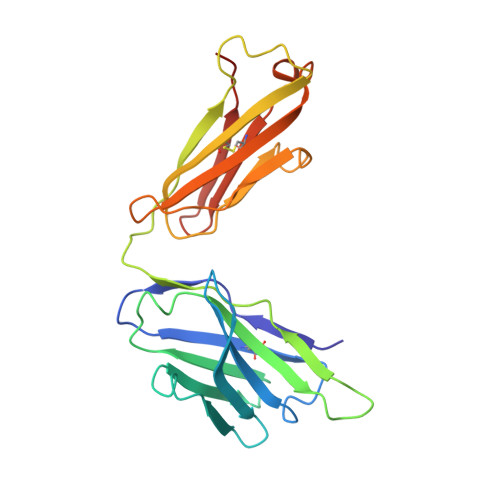Bactericidal antibody recognition of meningococcal PorA by induced fit. Comparison of liganded and unliganded Fab structures.
van den Elsen, J., Vandeputte-Rutten, L., Kroon, J., Gros, P.(1999) J Biol Chem 274: 1495-1501
- PubMed: 9880525
- DOI: https://doi.org/10.1074/jbc.274.3.1495
- Primary Citation of Related Structures:
1MNU - PubMed Abstract:
MN12H2 is a bactericidal antibody directed against outer membrane protein PorA epitope P1.16 of Neisseria meningitidis. Binding of MN12H2 to PorA at the meningococcal surface activates the classical complement pathway resulting in bacterial lysis. We have determined the crystal structure of the unliganded MN12H2 Fab fragment in two different crystal forms and compared it with the structure of the Fab in complex with a P1.16-derived peptide. The unliganded Fabs have elbow bend angles of 155 degrees and 159 degrees, whereas the liganded Fab has a more closed elbow bend of 143 degrees. Substantial differences in quaternary and tertiary structure of the antigen binding site are observed between the unliganded and liganded MN12H2 Fab structures that can be attributed to peptide binding. The variable light and heavy chain interface of the liganded Fab is twisted by a 5 degrees rotation along an axis approximately perpendicular to the plane of the interface. Hypervariable loops H1, H2, and framework loop FR-H3 follow this rotation. The hypervariable loop H3 undergoes conformational changes but remains closely linked to hypervariable loop L1. In contrast with the binding site expansion seen in other Fab-peptide structures, the MN12H2 binding site is narrowed upon peptide binding due to the formation of a "false floor" mediated by arginine residue 101 of the light chain. These results indicate that PorA epitope P1.16 of N. meningitidis is recognized by the complement-activating antibody MN12H2 through induced fit, allowing the formation of a highly complementary immune complex.
Organizational Affiliation:
Department of Crystal and Structural Chemistry, Bijvoet Center for Biomolecular Research, Utrecht University, Padualaan 8, 3584 CH Utrecht, The Netherlands.
















